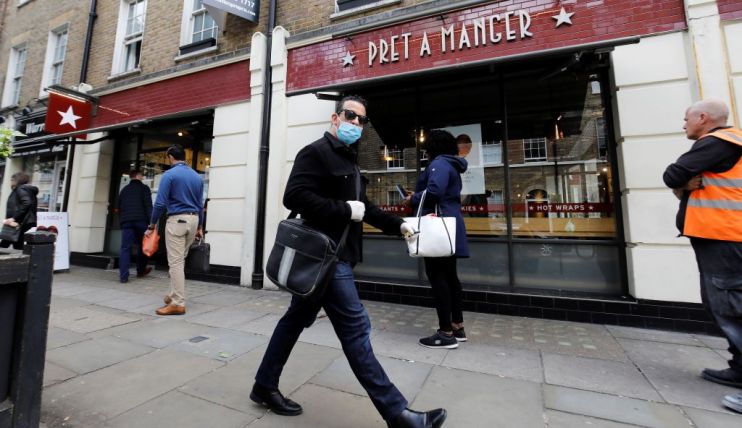Coronavirus: What is the NHS contact-tracing app and how does it work?

The eagerly-awaited NHS contact-tracing app has been rolled out for the first time today, with key workers on the Isle of Wight the first to trial the new technology.
The smartphone app, which is available to healthcare and council workers from today and the rest of the island from Thursday, is expected to be rolled out nationwide in the next few weeks.
But what is the contact-tracing app, how does it work, and why do we need it?
What is the contact-tracing app?
Talk of a contact-tracing app has been rife in recent weeks as the government races to find ways to lift the lockdown without sparking a second wave of coronavirus of infections.
Now we’ve been given more details about how the app will work, and a trial has been kicked off in the Isle of Wight.
The purpose of the app is to slow the spread of the virus by informing people if they have been in contact with someone who later reports they have Covid-19 symptoms.
Those who come into contact with the virus can then be advised on what action to take, such as self-isolation.
In addition, all users of the app can voluntarily log their symptoms, meaning anyone who has been in contact with them over the last 28 days can be informed.
The smartphone platform is designed to work alongside a manual contact-tracing system, which will use telephone calls to inform people if they have come into contact with the virus.
The government has said it will hire an army of 18,000 contact tracers to handle the system by mid-May.
How does it work?
The app, published on the Apple and Google stores, will use Bluetooth technology to send out an anonymous ID. When an individual comes close to another person using the app, the phones detect each other and log the contact.
If someone reports they are positive for Covid-19, the app will alert anyone who has been in contact in the last month using their anonymous ID.
The NHS contact-tracing app will be able to determine the level of risk by detecting the strength of the signal — which shows how close together two people are — and the duration of the contact.
Officials have also said that the technology can detect when signals have passed through walls.
The app will then advise these people on what action they should take. “The exact advice on what you should do will depend on the evolving context and approach,” says Matthew Gould, chief executive of NHSX.
Why do we need it?
The government has hailed the NHS contact-tracing app as a key part of its strategy for easing the lockdown, alongside other measures including testing and manual contact tracing.
“The goal is to keep the number of new infections coming down and bring in the test, track and trace app at a point, which we will do from tomorrow on the Isle of Wight and then by rolling out to the rest of the country we will get those numbers down,” health secretary Matt Hancock said yesterday.
However, the technology relies on uptake by a critical mass of the population, so authorities will be encouraging as many smartphone users as possible to download the app.
The UK’s contact-tracing app follows similar ventures elsewhere, with countries such as Singapore, Australia, India and China rolling out the technology.
South Korea has reported no new cases thanks to a contact tracing system that combined phone location data, CCTV footage and credit card transactions. However, this more intrusive approach has raised concerns about privacy.
What does it mean for privacy?
The prospect of a location tracking app on millions of smartphones has understandably raised concerns about privacy and data use.
Hancock has said the app will take “full consideration” of security concerns and argued that concerns about data use are “completely wrong”.
The National Cyber Security Centre, a branch of GCHQ, has issued a detailed explanation of how the contact-tracing app works and how it ensures privacy and security are protected.
The app does not record any personal information except your postcode, as well as the make and model of your smartphone. If you submit details of your symptoms, these can only be accessed by the NHS under your anonymous ID.
When other users are notified of a contact, they are not told who reported the symptoms or when the contact occurred.
Nevertheless, Amnesty UK director Kate Allen has raised concerns that the government is using coronavirus to “normalise technologies that threaten our privacy rights, and which the public would not accept in ordinary circumstances”.
Amnesty has called for greater justification for the app and asked why the UK is not following models used by other European countries.
“The public deserve answers and Mr Hancock must ensure that they are forthcoming rather than ploughing ahead without meaningful consultation and transparency,” Allen said.